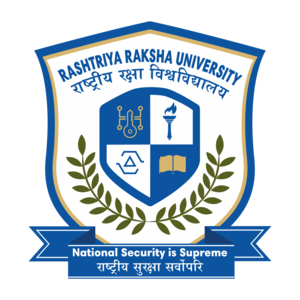As part of the academic curriculum for the Post Graduate Diploma in Cybersecurity and Digital Forensics (PGDCSDF) Batch of 2024–25 from Rashtriya Raksha University, Puducherry Campus, had the opportunity to visit the Forensic Science Laboratory (FSL) located in Kirumampakkam, Puducherry. This visit served as an eye-opening experience, bridging the gap between theoretical knowledge and its practical application in real-world cyber forensic investigations. The orientation session was conducted by Ms. GangaDevi, who began by introducing us to the origins and developmental journey of the lab. They explained how the lab initially started with basic forensic investigations and gradually expanded to accommodate the growing complexity of cybercrimes. It was intriguing to learn how the nature of crimes has evolved over the years—from conventional analog systems to digital platforms, then into cyberspace involving networks, and now into modern-day electronic devices, particularly those connected through the Internet of Things (IoT).
One of the most insightful parts of the session was the explanation of how cybercrime cases are categorized. The officials shared that cases received by the lab typically fall under three categories: Computer as a Victim, Computer as a Tool, and Computer as a Witness. This classification provides a foundational approach to understanding the role of technology in each investigation and helps shape the appropriate investigative strategy.
Furthermore, the session covered the Information Technology Act and the relevant laws that govern cyber offences in India. Understanding the legal framework behind digital forensics gave us a well-rounded perspective of how law and technology intersect in the pursuit of justice. The officials then walked us through the phases of cyber forensics, explaining the standard workflow followed in FSL, which includes evidence acquisition, preservation, analysis, and reporting. Each step is governed by strict procedural guidelines to ensure the integrity and admissibility of digital evidence in court.A particularly engaging part of the session was the technical discussion on the difference between cloning and imaging — a concept crucial to data acquisition in forensic investigations. This discussion sparked interactive engagement between the students and the officials.
The session continued with a demonstration of various data extraction techniques used for different devices such as mobile phones, USB drives, hard disks, and SSDs. In the area of mobile forensics, we were introduced to logical, file system, and physical extraction methods, as well as the subsequent processes of data analysis. We also gained exposure to CCTV forensics, where we were taught how footage from signal points and roadside cameras is used for image comparison and identification of persons or vehicles, which plays a key role in criminal investigations. Lastly, the officials demonstrated several tools that are regularly used in the lab.
In conclusion, the visit to the Forensic Science Laboratory was an immensely informative and enriching experience. It provided us with a clear and practical understanding of the functioning of a digital forensics lab and the real-life challenges involved in cybercrime investigations. The exposure to tools, techniques, and case-handling strategies has significantly enhanced our understanding and has inspired many of us to pursue advanced expertise in the domain of cyber forensics.








.JPG)



0 Comments